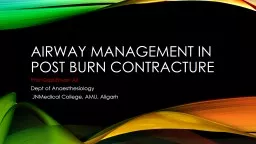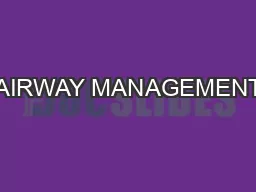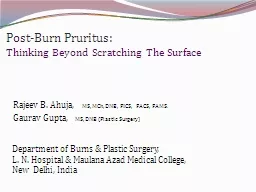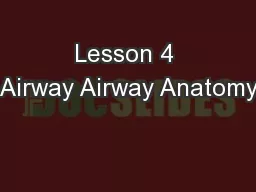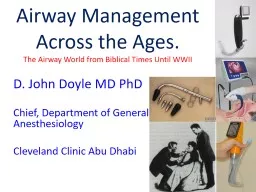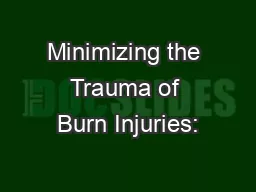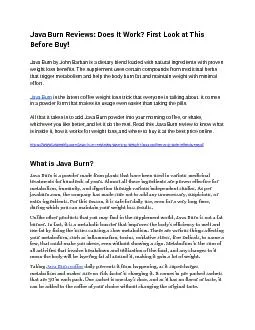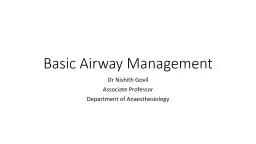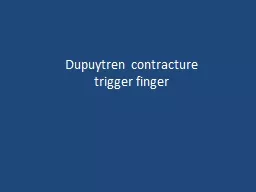PPT-AIRWAY MANAGEMENT IN POST BURN CONTRACTURE
Author : BlueberryBelle | Published Date : 2022-08-04
Prof Qazi Ehsan Ali Dept of Anaesthesiology JNMedical College AMU Aligarh Airway issues in burns may be classified into two distinctive recovery stages acute
Presentation Embed Code
Download Presentation
Download Presentation The PPT/PDF document "AIRWAY MANAGEMENT IN POST BURN CONTRACTU..." is the property of its rightful owner. Permission is granted to download and print the materials on this website for personal, non-commercial use only, and to display it on your personal computer provided you do not modify the materials and that you retain all copyright notices contained in the materials. By downloading content from our website, you accept the terms of this agreement.
AIRWAY MANAGEMENT IN POST BURN CONTRACTURE: Transcript
Download Rules Of Document
"AIRWAY MANAGEMENT IN POST BURN CONTRACTURE"The content belongs to its owner. You may download and print it for personal use, without modification, and keep all copyright notices. By downloading, you agree to these terms.
Related Documents

